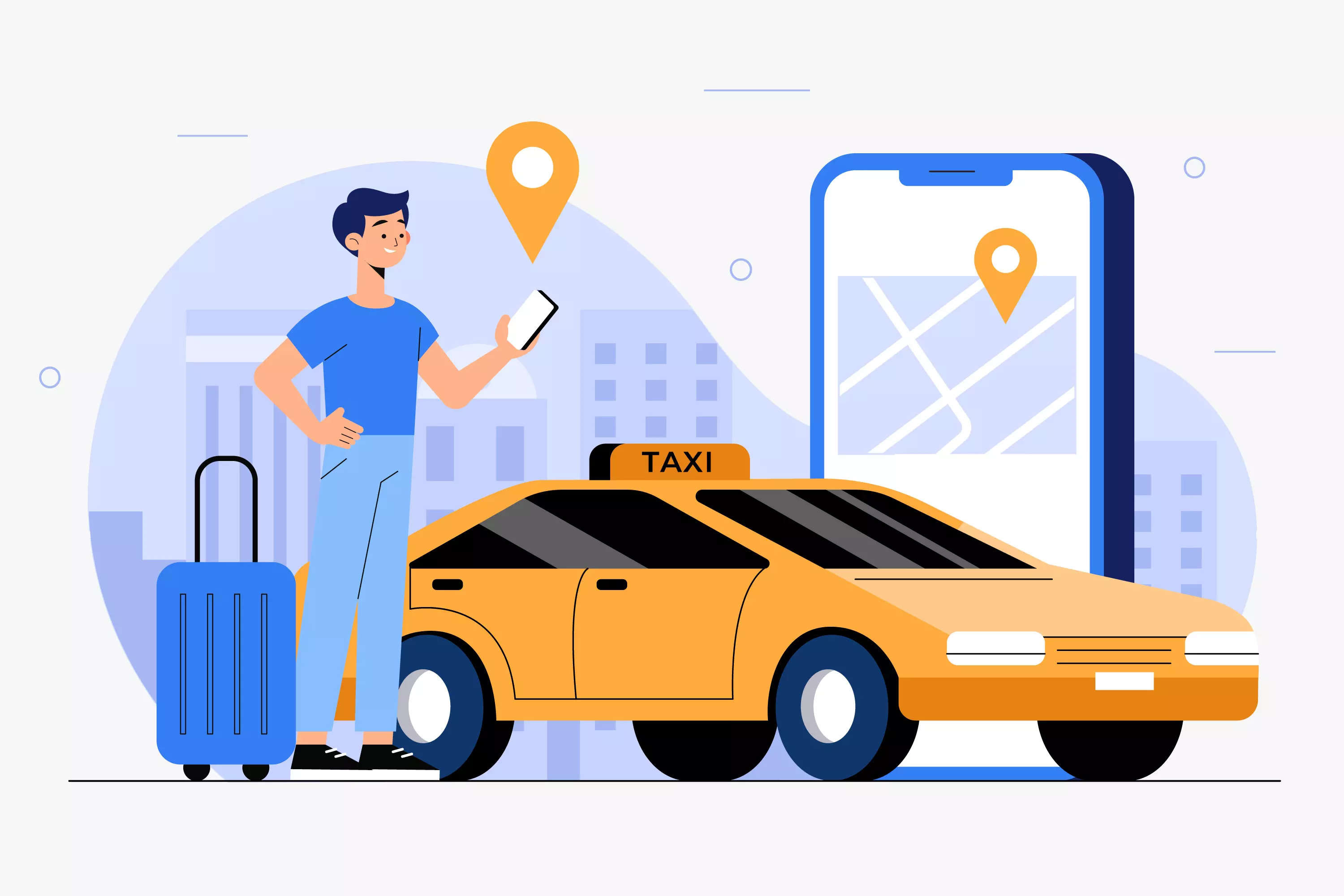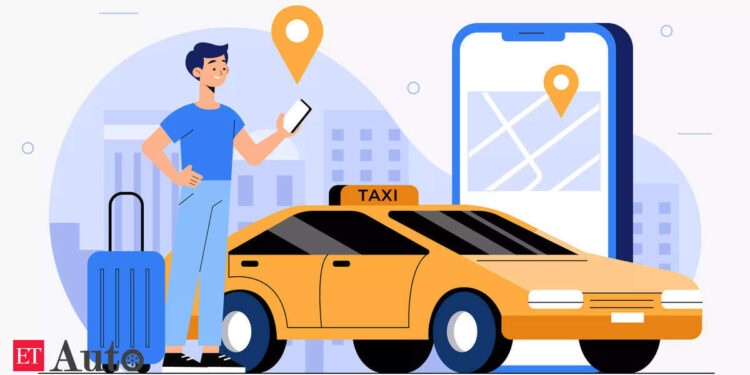
Mumbai:
India’s two dominant ride hailing platforms – Ola and Uber – are facing several smaller upstarts, category-specific business models as well as traditional players looking to break their duopoly.As urban mobility picks up after a two-year jolt from the Covid-19 pandemic, Rapido in the auto segment, BluSmart with its electric car fleet in Delhi-NCR, blockchain-based mobility startup Drife as well as new and older firms operating specifically in the lucrative airport and inter-city services space are going all out to corner market share from the leaders.
Ride hailing in the days before the pandemic, especially in cabs, was ruled by Ola and Uber, but as the economy opened up, a bunch of companies feel the sector is ripe for disruption.
BluSmart, a Bengaluru-based all-electric cab company, is close to raising $250 million from investors including BP’s venture capital division, according to people in the know. Cofounder Tushar Garg told ET that it has 1,800 cabs running in Delhi-NCR and is adding 500-700 cabs every month.
Drife said on instant messaging Telegram that it had deployed about 10,000 cabs in Bengaluru as part of a pilot. The platform allows users to determine their own fares and drivers to receive payouts daily.
According to Tanveer Pasha, president of Ola-Uber cab drivers’ association, there are about 45,000 Ola and Uber drivers in the city, down from over 100,000 pre-pandemic.
All these players want to disrupt Ola and Uber at a time when both companies are seeing more ride volumes than before.
According to Vumonic, a data capture platform, the total number of rides on Ola and Uber in April was 1.4 times the number of rides in January 2020.
Ola did not respond to ET’s queries seeking market share data and on whether it had been facing competition across different categories.
Uber also did not share specific market share data, but said one out of every two rides happens outside its car category.
“The market is large enough for multiple players and having leading products across two, three and four-wheeler categories on our platform across 100-plus cities, we believe competition only makes us better for our customers – riders and drivers alike,” an Uber spokesperson said.
Beyond cab-hailing
Companies are trying to scale up in not only the taxi aggregator business, but also in autos (three-wheelers).
Rapido cofounder Aravind Sanka told ET that after launching its auto service during the pandemic, the company has achieved an equal market share compared to Uber in Bengaluru and Hyderabad.
Nationally, it has a market share of 18%, Sanka said.
The auto category is now the largest contributor to Rapido’s gross merchandise value (GMV), even though the company is known for its bike-taxi service.
Its GMV increased to $314 million in June compared to $55 million in June 2021, and over 45% of its GMV comes from the auto category, Sanka said.
In April, food delivery platform Swiggy led an $180 million round in Rapido, giving it a 15% stake in the Bengaluru-based mobility firm.
Emerging companies have seized the opportunity by understanding the analytics of consumer problems and patterns, and strategically focusing on solutions in profitable categories.
They have also concentrated on sustainable routes by assuring commuters transparent pricing, on-time pick-up, safety, cleanliness and driver courtesy.
“Those that are agile in moving with consumer requirements will find niches and exploit the spaces being exposed. Management of such a business is much more than a tech platform and works on a foundation of partnership through a customer-centric, collaborative and compliant ecosystem,” said Vinay Piparsania, founder of mobility advisory firm MillenStrat Advisory & Research.
The challenge in shared mobility during the pandemic was that consumers were not comfortable sharing vehicles.
That has changed, and with the economics becoming better, it is bringing back confidence among users, said experts.
“As a natural extension to our ticketing and accommodation business, we started offering last mile solutions like airport transfers, one-way cab transfers, inter and intra-city cab rental,” said Parikshit Choudhury, chief business officer, ground transport, MakeMyTrip, which has tied up with Meru, BluSmart, Mega Cabs and other independent cab operators to offer airport pick up and drop services.
“In one-way transfer, it works for the commuter as they are charged only for one way and also for the cab operator… MakeMyTrip is able to generate a return journey resulting in optimum asset utilisation too,” said Choudhury.
Airport rides and inter-city travel are one of the most lucrative categories within the cab business as they ensure longer rides, and hence more revenue.
“With more evolved and varied commuter mobility needs post-pandemic, drivers/taxi owners find uncertainty and commercial terms of existing arrangements with principals like Ola and Uber difficult,” said Kaushik Madhavan, vice president, mobility practice at Frost and Sullivan.
Supply side crunch
“The pandemic period saw a number of these drivers default on their loans and financial arrangements and take on other occupations, resulting in fewer vehicles available as commuters gradually started coming back,” said Piparsania of MillenStrat.
ET reported on May 22 that drivers were logging out of Ola and Uber over rising fuel prices and low incentives.
Those drivers that managed to survive were faced with higher fuel prices, maintenance costs, fewer riders and no option for shared riders.
Many of these players are specifically trying to solve this problem.
According to Drife’s whitepaper, which ET has reviewed, it claims platform commissions (Drife collects a subscription fee) are just about a third of “other” ride-hailing platforms, and the earnings that drivers make from Drife are around 21% to 27% more compared to incumbents.
“As the demand for commuting has now breached pre-pandemic levels, especially in metro locations, the situation has dramatically flip-flopped with Uber and Ola choosing an opportunistic approach to recover business through higher fares, lower driver incentives and staff reduction,” said Madhavan.
Lower and stressed availability of new vehicles because of disruptions in manufacturing meant continued dependency on ride-hailing as offices opened and inter-city travel and flights resumed.
“Drivers in turn realised the opportunity for their personal recovery maximisation by working around rides that offered better yield and reneging on those that did not, with no fear of recourse as Uber and Ola looked the other way,” said Piparsania of MillenStrat.
Several drivers cut corners in the cleanliness and maintenance of their vehicles. Overall, the impact on commuters was that they were arm-twisted to pay more for for lower service delivery with a lot of frustration and anxiety, Piparsania added.
Move to corporate biz
The most amount of repeat users in ride-hailing are office commuters, and specialised players are offering tailor-made services in this segmentas well.
Pre-pandemic, companies like Move-in-Sync and Lithium Urban started focussing on daily office commute by tying up with corporates to transport employees, and these companies are getting back to it.
In March, Mumbai-based Eversource Capital acquired a majority stake in Lithium Urban, and in April the company struck an agreement with Tata Motors to buy 5,000 electric cars.
The self-drive rentals under Myles and Avis are now back to pre-pandemic levels.
“The last quarter has been extremely encouraging. We are seeing business travellers as well as young urban leisure travellers opting for self-drive options on our platform,” said Sakshi Vij, founder of Myles Cars.
The pandemic led to an increased consciousness about finances and savings.
At the same time, there was a need for personal mobility options such as rentals as an alternative to purchasing vehicles.
The young generation, which does not have a long-term view of jobs, wants to spend on experiences and prefer not to own a car. This trend is catching on, said Sunil Gupta, managing director and CEO, Avis India.
“We are seeing a smart recovery since February 2022, reaching pre-Covid-19 level as domestic travel within the country increases. This has also led to reinvesting in increasing our fleet size,” said Gupta.
“We are looking at reaching 5,000 vehicles on our platform in the next 12-18 months,” said Sakshi of Myles.
There is room for several players, and the post-pandemic arena will result in a definite shift of power from the current duopoly, and the emergence of a more competitive mobility arena, experts said.
GFX
Head: Signs of disruption
Drivers are facing higher fuel prices and maintenance costs, as well as low incentives from Ola and Uber
EV-based disruption:
– Blu Smart is set to raise $250 million as it expands its cab business
– In office commute, Lithium Urban has placed orders for over 5,000 electric cars
Both these companies take ownership of the car away from the driver
Blockchain-based business model:
– Drife claims its platform cost or commission is just about one-third of “other” ride-hailing platforms, and the earnings that drivers make from Drife are around 21-27% more.
The auto category is Rapido’s biggest contributor in terms of GMV















